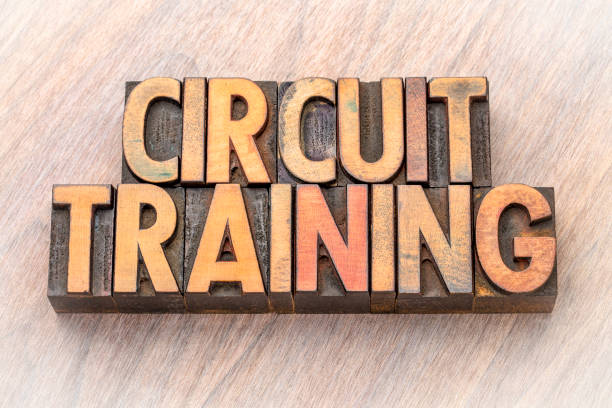Whether you’re new to exercise or looking to switch up your routine, circuit training can be a fun and effective option. In this article, I’m going to break down everything you need to know about circuit training for beginners, share some practical advice, and give you a roadmap to get started on the right foot.
What Exactly is Circuit Training?
First things first, let’s clear up any confusion. Circuit training involves performing a series of exercises in a specific sequence, with minimal rest in between. It’s a versatile workout that combines cardiovascular exercise, strength training, and even flexibility work, all in one session. This makes it an excellent choice for beginners who want a well-rounded workout without spending hours at the gym.
Why Choose Circuit Training as a Beginner?
- Efficiency: Circuit training is time-efficient. You can achieve a full-body workout in a shorter amount of time compared to traditional workouts.
- Variety: With circuit training, you won’t get bored easily. The mix of different exercises keeps things interesting and prevents workout monotony.
- Adaptability: You can tailor circuit training to your fitness level. As a beginner, you can start with simpler exercises and gradually increase the intensity as you become more comfortable.
- Weight Loss: If weight loss is a goal, circuit training can help you burn calories and build lean muscle simultaneously, leading to effective fat loss.
- Cardiovascular Health: Circuit training elevates your heart rate, improving your cardiovascular fitness and endurance.
- Strength Building: You’ll work on both your muscular and functional strength, helping you perform daily tasks with ease.
Tips and Advice for Getting Started
Before starting any new exercise program, especially as a beginner, it’s a good idea to consult a fitness professional or your healthcare provider. They can help you assess your fitness level and suggest modifications as needed. Consider these tips as well:
- Start Slow: As a beginner, the key is to start slow and gradually build up. Begin with a shorter circuit and slower pace, then gradually increase the duration and intensity over time.
- Choose Basic Exercises: Focus on basic bodyweight exercises like squats, lunges, push-ups, and planks. These movements are effective and safe for beginners.
- Warm-Up: Always warm up before diving into your circuit. A few minutes of light cardio, such as jogging in place or jumping jacks, followed by dynamic stretches, will prepare your body for the workout.
- Form Over Speed: Proper form is crucial to prevent injuries. Don’t rush through the exercises—focus on maintaining correct form even if it means performing fewer reps.
- Rest Intervals: Initially, allow slightly longer rest intervals between exercises. As you progress, you can decrease the rest time to challenge your cardiovascular fitness.
- Listen to Your Body: Pay attention to how your body feels during the workout. If something doesn’t feel right, stop and adjust as needed. It’s better to start slowly than to risk injury.
- Stay Hydrated: Hydration is essential. Keep a water bottle handy and take small sips during rest intervals.
Designing Your Beginner Circuit
Here’s a simple yet effective circuit training routine to get you started. Remember, you can adjust the exercises, reps, and rest intervals based on your fitness level.
- Warm-Up (5-7 minutes):
- Jumping jacks: 1 minute
- Arm circles: 1 minute
- Leg swings: 1 minute
Circuit (3 rounds; 30 seconds per exercise, 1-2 minutes rest between rounds):
- Bodyweight squats
- Push-ups (on knees if needed)
- Plank (start with 20-30 seconds and increase gradually)
- Walking lunges
- Bent-over dumbbell rows (if you have access to dumbbells)
Cool-Down (5-7 minutes):
- Hamstring stretch: 30 seconds each leg
- Quad stretch: 30 seconds each leg
- Child’s pose: 1 minute
- Deep breathing and stretching
- Progression and Next Steps
As you become more comfortable with your circuit, you can make small adjustments to challenge yourself. Increase the duration of exercises, reduce rest intervals, incorporate light weights, or add more challenging variations of exercises.
Remember, consistency is key. Aim to perform this circuit 2-3 times per week, allowing your body to recover between sessions. Over time, you’ll notice improvements in your strength, endurance, and overall fitness level.
Circuit training is a fantastic way for beginners to embark on their fitness journey. It’s versatile, efficient, and adaptable, making it a perfect choice for those looking to achieve a balanced and effective workout. Just remember to start slow, focus on proper form, and listen to your body. With dedication and consistency, you’ll be amazed at the progress you can make. So, lace up those sneakers, grab a water bottle, and let’s get started on this exciting fitness adventure!
Here’s a beginner-friendly circuit training workout:

